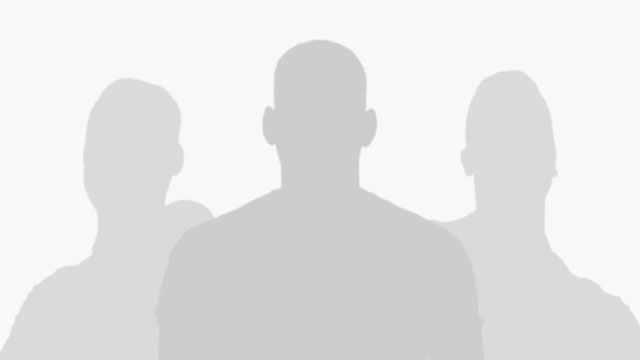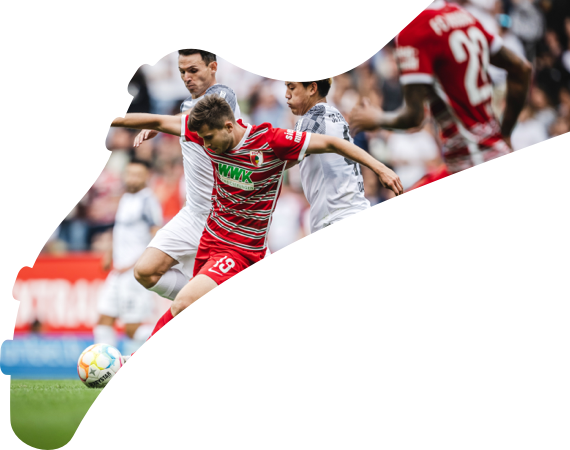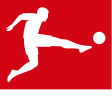
A short history of the official Bundesliga soccer ball
What is the official match ball used in the Bundesliga? How long has it been around? What was there previously? The history of the soccer ball is a fascinating one in Germany’s top flight, as bundesliga.com reveals…
Let's start at the beginning. The first football match on German soil took place in Braunschweig (home of now third-tier club Eintracht Braunschweig) in October 1874. A pair of local teachers, Konrad Koch and August Hermann, supplied a ball ordered from England for their pupils to play with, and before long the game was commonplace in schools across the country.
There have obviously been significant changes down the years, and one of the most notable early ones was that the cowhide used for the soccer ball was tanned not greased – leading to a yellowish colour in the mid-1950s – with three leather strips stitched on, rather than a uniform leather covering, leading to slightly triangular-shaped balls.
Remarkably, the leather soccer ball was used for almost a century, despite the fact that it became heavier in rainy or wet conditions, the knock-on effect being that the quality of the game decreased.
Germany managed to win the FIFA World Cup in 1954 with a leather ball, which was also in use upon the foundation of the Bundesliga in 1963.
It wasn't until the 1970 FIFA World Cup in Mexico that the first real soccer ball revolution arrived. As the manufacturer of the official ball for the tournament, adidas developed a ball based on shapes from ancient Greek arithmetic: the result was the Telstar, which was formed of 12 black pentagons and 20 white hexagons, stitched together in a perfect circle. The colours were chosen so as to be immediately recognisable on black-and-white televisions of the era.
In the Bundesliga, until the introduction of the adidas TORFABRIK soccer ball in 2010/11, different clubs used different balls, as it was their prerogative as the home team to decide which ball would be used for a game.
A single soccer ball was used for all 306 Bundesliga matches in the 1979/80 campaign, but the idea of using a universal ball was only agreed upon for the start of the 2010/11 season, when the DFL signed a contract with German sportswear manufacturer adidas to supply TORFABRIK soccer balls for the next five seasons. Previously, a range of balls would be used for matches, often a different one each week.
TORFABRIK, incidentally, translates as 'goal factory'. The ball certainly lived up to its name in 2010/11, with 894 goals scored in the Bundesliga that season, at an average of 2.92 per match.
The TORFABRIK, the Bundesliga's first uniform soccer ball, made its domestic debut in the 2010 Supercup encounter between Bayern Munich and Schalke at Augsburg's WWK Arena.
The original TORFABRIK soccer ball from 2010/11 was modelled on the Jabulani match ball used at the 2010 FIFA World Cup, while the 2014/15 ball also took inspiration from the Brazuca ball used at the 2014 World Cup.
From the 2018/19 season onward, however, DERBYSTAR took over as the Bundesliga's official match ball supplier, and continues to this day.
"DERBYSTAR always stood for outstanding quality in my day," said former Borussia Mönchengladbach player, coach and all-round Bundesliga legend Jupp Heynckes. "All of my major triumphs with Gladbach came when using the DERBYSTAR ball."
As long ago as the 1970/71 season, DERBYSTAR was represented in the Bundesliga through numerous partnerships with different clubs. In the 1979/80 season, DERBYSTAR balls were used in all 306 matches played in the Bundesliga.
Since its foundation in 1968, DERBYSTAR has specialised in the production of hand-stitched sports balls and was among the first manufacturers to use synthetic materials for this purpose. This decision was seen as groundbreaking in the mid-1970s and remains a benchmark in terms of innovation.
That much was clear at the start of the 2019/20 campaign, which heralded the arrival of the 'Bundesliga Brillant APS'.
Watch: A closer look at the DERBYSTAR Bundesliga ball for 2019/20

The design of the ball was based on the classic black and white look of DERBYSTAR and was complemented by innovative optical elements. DERBYSTAR reinterpreted the stripe design to symbolise the interaction between players and fans through the intertwining movements of the lines. The transition from increasingly light, silver to dark, black elements emphasised the speed and dynamics of the ball.
The turquoise colour reflected DERBYSTAR's business philosophy by combining two colours and their symbolic meanings into one: green stands for the reliability and trustworthiness that the official ball radiates on the field, blue is the colour of the soul and stands for the belief that every ball has a soul.
The 2020/21 campaign brought about some subtle changes. In contrast to the designs for the previous two seasons, DERBYSTAR opted for visuals that featured two striking colours.
Watch: The DERBYSTAR match ball for 2020/21

Moreover, the 3D structure on the material surface was intended to make for an even more stable trajectory and precise ball control as well as to optimise grip for goalkeepers. Thanks to the special white panels, the match ball was very easy to see for players and spectators alike, especially under LED light.
And if it ain't broke, don't fix it, right? As such, the 2021/22 ball didn't undergo any radical changes. Instead, DERBYSTAR opted to continue with a design that features two striking colours - this time dark blue and orange. The material is identical to that of the previous model.
Watch: The DERBYSTAR match ball for 2021/22

DERBYSTAR's 2022/23 offering then introduced a striking new design that paid homage to football fans, with multi-coloured silhouettes of supporters holding scarves and flags adorning the match ball's panels.
Now, for the 2023/24 campaign, DERBYSTAR has again delivered the goods, with its classic version a tribute to the original ball used all those years ago. It's slick black-and-white design will delight football fans all other the world for its simplicity and will be used on matchdays 1 and 2 of the new season. The latest Brillant APS ball will then take over, with a more modern aesthetic linking the two balls in celebration of the Bundesliga's 60th anniversary.
Watch: Meet the Bundesliga's 2023/24 official match balls

Related news

Frankfurt in talks with Man City over Marmoush transfer
Eintracht's talisman and top scorer this season was not in the squad for the team's Matchday 18 meeting with Dortmund.

Stuttgart produce statement win over Freiburg
Stuttgart gave an exhibition in attacking football as they cruised to a commanding 4-0 victory over Freiburg.

US Soccer Players in Germany: 2024/25 update
How did the likes of Joe Scally, Gio Reyna and Jordan fare in the latest round of Bundesliga fixtures?


